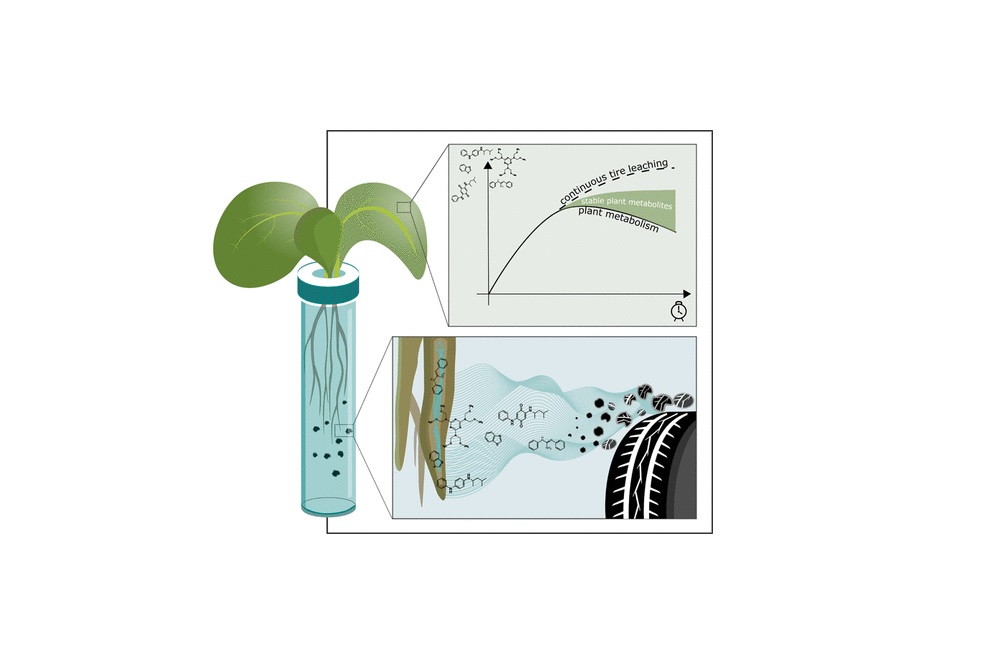The Tyre Industry Project, the cooperative group of tyre manufacturers that addresses common industry issues across the tyre sector has been, for some time, investigating how it can address issues related to tyre wear particles, which end up in the soil and in the waterways and oceans as microplastics
We have seen issues related to Quinone 6PPD, a derivative of an additive to tyre rubber impacting upon Coho Salmon in Washington State, USA. However, at the 2022 ETRA Conference it was revealed by Nick Molden, from Emissions Analytics UK. that the majority of tyre wear particles were atmospheric and were deposited in roadside agricultural land rather than being washed down the gullies at the roadside.
Now, scientists at the Centre for Microbiology and Environmental Sciences at the University of Vienna have shown that chemicals released from tyres do, in fact, enter the food stream and could end up being consumed – and that Quinone 6PPD might be entering the food chain.
Their analyses on the impact of tyre wear contaminants on lettuce showed: The lettuce took up all the compounds studied – some of them highly toxic. Further investigations are to show how this process actually takes place in arable soils. The study has now been published in the international journal Environmental Science & Technology.
In soils, the small plastic or tyre particles usually release their pollutants in the upper soil layers – this was determined in earlier studies by the research team led by environmental geoscientist Thilo Hofmann from the University of Vienna. In their current study, the researchers shed light on whether the pollutants could migrate from there into the crops.
“Tyre wear particles contain a number of organic chemicals, some of which are highly toxic,” says Anya Sherman, PhD student at the Centre for Microbiology and Environmental Systems Science (CMESS) and co-first author of the newly published study. Thilo Hofmann, head of the research group, adds; “If these chemicals are released in the root zone of edible plants, they can be a health concern for consumers – provided the chemicals are taken up by the plants.”
The environmental geoscientists added five chemicals to the hydroponic solutions of lettuce plants. Four of these chemicals are used in tyre production. Not all of them have already been confirmed to be harmful. Yet, the fifth chemical is a transformation product of one of these four, (Quinone) created once the tyres are in use, and it is proven to be toxic: The chemical 6PPD-quinone (originating from 6PPD) has been linked to mass deaths of salmon in the U.S. “Our measurements showed that the lettuce plants took up all the compounds we investigated through their roots, translocated them into the lettuce leaves and accumulated them there,” Sherman reports. This was also evident when the lettuce plants were not exposed to the chemicals directly, but indirectly via tyre crumb. “The lettuce plants continuously take up the potentially harmful chemicals that are released from the tyre abrasion particles over the long term,” reports Thilo Hofmann.
Lettuce produces metabolites with as of yet unassessed toxicity
Using high resolution mass spectrometry methods, the Viennese environmental geoscientists not only measured the extent to which the previously defined chemicals ended up in the lettuce plants. They also identified the substances to which the lettuce plants metabolised the chemicals. “The plants processed the substances and in doing so they produced compounds that have not been described before. Since we don’t know the toxicity of these metabolites, they pose a health risk that cannot be assessed so far,” Thorsten Hüffer, senior scientist at CMESS, emphasises. The metabolites identified by the research team are quite stable in the plant. Most likely, they would therefore be preserved until reaching our plates. “In the human body, however, such compounds are very easily broken down. Thus, if someone eats such a contaminated lettuce, the original chemicals could be released again in the body,” Sherman explains.
In further studies, the Viennese research team plans to better trace the possible path of tyre-wear pollutants from the road to the plate. “The processes we have investigated probably take place differently in soil systems. In a next step, we are therefore looking at the possible uptake of tyre additives by plant roots in natural soils,” reports co-author Ruoting Peng, who, in her dissertation project, traces the presence of an even wider range of additives in the environment, focusing on the pollution of water bodies. To better understand how such chemicals are entering the environment, in an ongoing project the research team is looking to obtain data on the concentration of these chemicals along the Danube in cooperation with the CleanDanube Project.
The report, in full can be found HERE




















